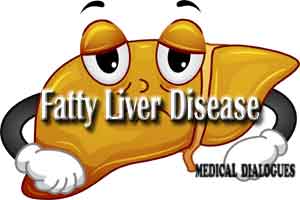- Home
- Editorial
- News
- Practice Guidelines
- Anesthesiology Guidelines
- Cancer Guidelines
- Cardiac Sciences Guidelines
- Critical Care Guidelines
- Dentistry Guidelines
- Dermatology Guidelines
- Diabetes and Endo Guidelines
- Diagnostics Guidelines
- ENT Guidelines
- Featured Practice Guidelines
- Gastroenterology Guidelines
- Geriatrics Guidelines
- Medicine Guidelines
- Nephrology Guidelines
- Neurosciences Guidelines
- Obs and Gynae Guidelines
- Ophthalmology Guidelines
- Orthopaedics Guidelines
- Paediatrics Guidelines
- Psychiatry Guidelines
- Pulmonology Guidelines
- Radiology Guidelines
- Surgery Guidelines
- Urology Guidelines
Indian Scientists Inch Closer To Treating Deadly Fatty Liver Disease

Kolkata : Advancing the hunt for elusive therapeutics against non alcoholic fatty liver disease (NAFLD), the most common liver affliction across the globe, the Indian researchers have discovered a new mechanism through which the liver hoards up extra fat from sources other than alcohol.
They have also identified a brand new drug target for potential therapy for the disease, that tends to develop in people who are overweight or obese or have type-2 diabetes.
NAFLD affects more than 30 per cent adult Indians and occurs when more than 5 to 10 per cent of the liver's weight is fat.
There is no definite therapy for the disease.
Moreover, a significant number of NAFLD patients progress to the most extreme form of the disease called non-alcoholic steatohepatitis (NASH), an irreversible clinical condition that causes the liver to swell and become damaged and trigger cirrhosis in adults.
The senior researcher Partha Chakrabarti's research group along with Saikat Chakrabarti's laboratory at Indian Institute of Chemical Biology, a unit of CSIR, decided to take a shot at the silent, crippling disease that evolves over decades, its prevalence advantaged with low public awareness.
They literally copped their eyes on to the cell's protein degradation machinery to zero-in on the target protein COP1.
"Multiple molecular mechanisms believed to cause NAFLD have been put forward over the years. However, we identified a hitherto unknown mechanism for the control of liver fat," Chakrabarti, Cell Biology & Physiology Division at the institute told IANS.
"We find that inhibition of COP1 can significantly reduce liver fat in NAFLD. However, it is still not clear whether COP1 can halt disease progression or can prevent NASH. We are currently working in this direction," Chakrabarti added.
The study has been published in September in the journal Diabetes, from American Diabetes Association (ADA).
According to CSIR-IICB Director Samit Chattopadhyay, the development will motivate the scientific community to come up with new solutions to this global problem and is "geared towards India's goal of delivering translational research outputs to the nation."

Disclaimer: This site is primarily intended for healthcare professionals. Any content/information on this website does not replace the advice of medical and/or health professionals and should not be construed as medical/diagnostic advice/endorsement or prescription. Use of this site is subject to our terms of use, privacy policy, advertisement policy. © 2020 Minerva Medical Treatment Pvt Ltd